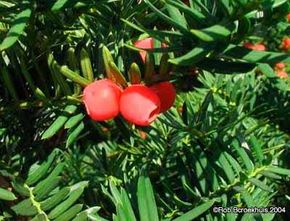Despite it's exotic name, the Japanese yew (aka spreading yew) can be found in parks and neighbourhoods all over the Western hemisphere. The dense foliage of Japanese yews make them the ideal accent plants and perfect for hedge rows.
You see, most conifers don't like the shade, but Japanese yews are a major exception. These popular evergreen shrubs thrive in partial shade or full sun, and can add a pop of color to the otherwise barren shade garden from fall through early spring.
Advertisement
